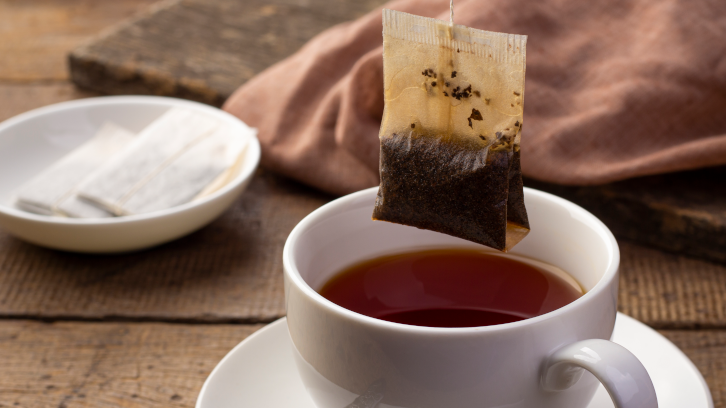A Cup of Tea or millions of Micro and Nanoplastics?

A UAB research has characterised in detail how polymer-based commercial tea bags release millions of nanoplastics and microplastics when infused. The study shows for the first time the capacity of these particles to be absorbed by human intestinal cells, and are thus able to reach the bloodstream and spread throughout the body.
Plastic waste contamination represents a critical environmental challenge with growing implications for future generations, However, the health risks associated with this contamination remain the lack of information. Food packaging, however, is one of the main sources for micro- and nanoplastics (MNPLs) contamination and their ingestion, the main route of human exposure and inhalation.
In a groundbreaking study, the UAB Mutagenesis Group has successfully obtained and characterized MNPLs derived from various types of teabags commercially available in local supermarkets or via online purchase. These materials are particularly valuable as they closely mimic real-world environmental contaminant profiles, providing an important tool for advancing research on their potential impact on human health.
The study aimed to examine the release of MNPLs from commercially available polymer-based teabags, simulating tea preparation. Using advanced analytical techniques, the UAB researchers confirmed the presence of nano-range particles and filamentous structures, highlighting significant nanoplastic contamination in the cup of tea.
The teabags were made of nylon-6 (NY6), polypropylene (PP), and cellulose (CL). The study found that polypropylene (PP) released approximately 1.20 billion particles per milliliter, with an average size of 136.7 nanometers. Cellulose (CL) released about 135 million particles per milliliter, averaging 244 nanometers in size. Nylon-6 (NY6) released the least number of particles, with 8.18 million particles per milliliter analyzed, with an average size of 138.4 nanometers.
The particles were stained and used to expose different human intestinal cell types (Caco-2, HT29, HT29-MTX) to assess their interaction and potential cell internalization. Biological interaction experiments showed that mucus-producing intestinal cells (HT29-MTX) had the highest uptake of MNPLs, suggesting a key role of mucus in particle absorption and underscoring the need for further research into the health effects of chronic exposure.
In conclusion, findings highlight the urgent need for further investigations in the field of emergent environmental contaminants like MNPLs and their toxic effects on human health. In addition, more realistic models to assess MNPL exposure are also needed including new approach methodologies and the production of reference materials to be tested. As plastic usage in food packaging continues to rise, it is vital to address MNPL contamination to ensure food safety and protect public health. To achieve this, standardized testing methods must be developed to evaluate plastic contamination in food contact materials and formulate regulatory policies to mitigate and minimize contamination effectively. This study underscores the urgent need for enhanced efforts to identify the sources of MNPLs and to develop robust mitigation strategies. Such initiatives are essential for advancing our understanding of their environmental and health impacts.
Department of Genetics and Microbiology
Universitat Autònoma de Barcelona
References
Banaei, G.; Abass, D.; Tavakolpournegari, A.; Martín-Pérez, J.; Gutiérrez, J.; Peng, G.; Reemtsma, T.; Marcos, R.; Hernández, A. & García-Rodríguez, A. (2024). Teabag-derived micro/nanoplastics (true-to-life MNPLs) as a surrogate for real-life exposure scenarios. Chemosphere, 368, 143736. https://doi.org/10.1016/j.chemosphere.2024.143736


